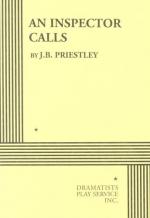|
This section contains 1,200 words (approx. 3 pages at 400 words per page) |

|
Point of View
The first point to note about this piece’s overall narrative point of view is that it is a play, and therefore does not have a single narrative voice. In other words, no-one is telling the story in first-person or third-person, past-tense or present-tense. It could be argued that plays are, by definition, told in the present-tense, since their action unfolds in real time. Ultimately, though, the question of tense, or narrative point of view in time, is not entirely relevant. The point here is that in this play, there is no central narrative point of view. In some plays, there is a central character or protagonist around whom the action and themes are constructed. In this case, however, there is no such character. With the exception of the briefly appearing maid, the six central characters share narrative and thematic focus, meaning that the story...
|
This section contains 1,200 words (approx. 3 pages at 400 words per page) |

|




